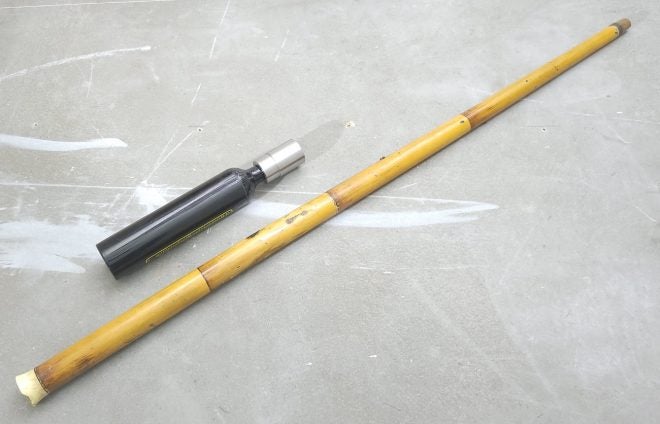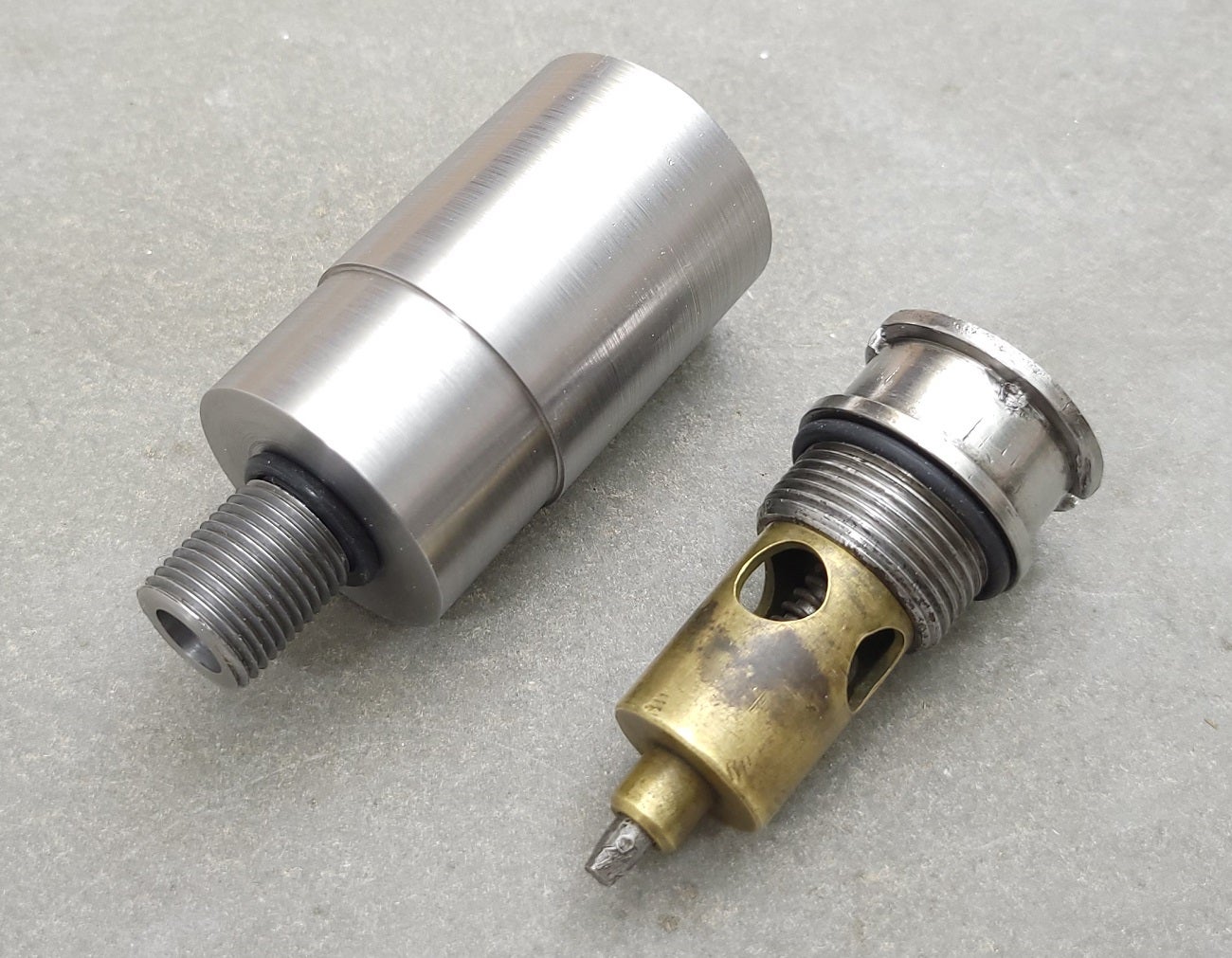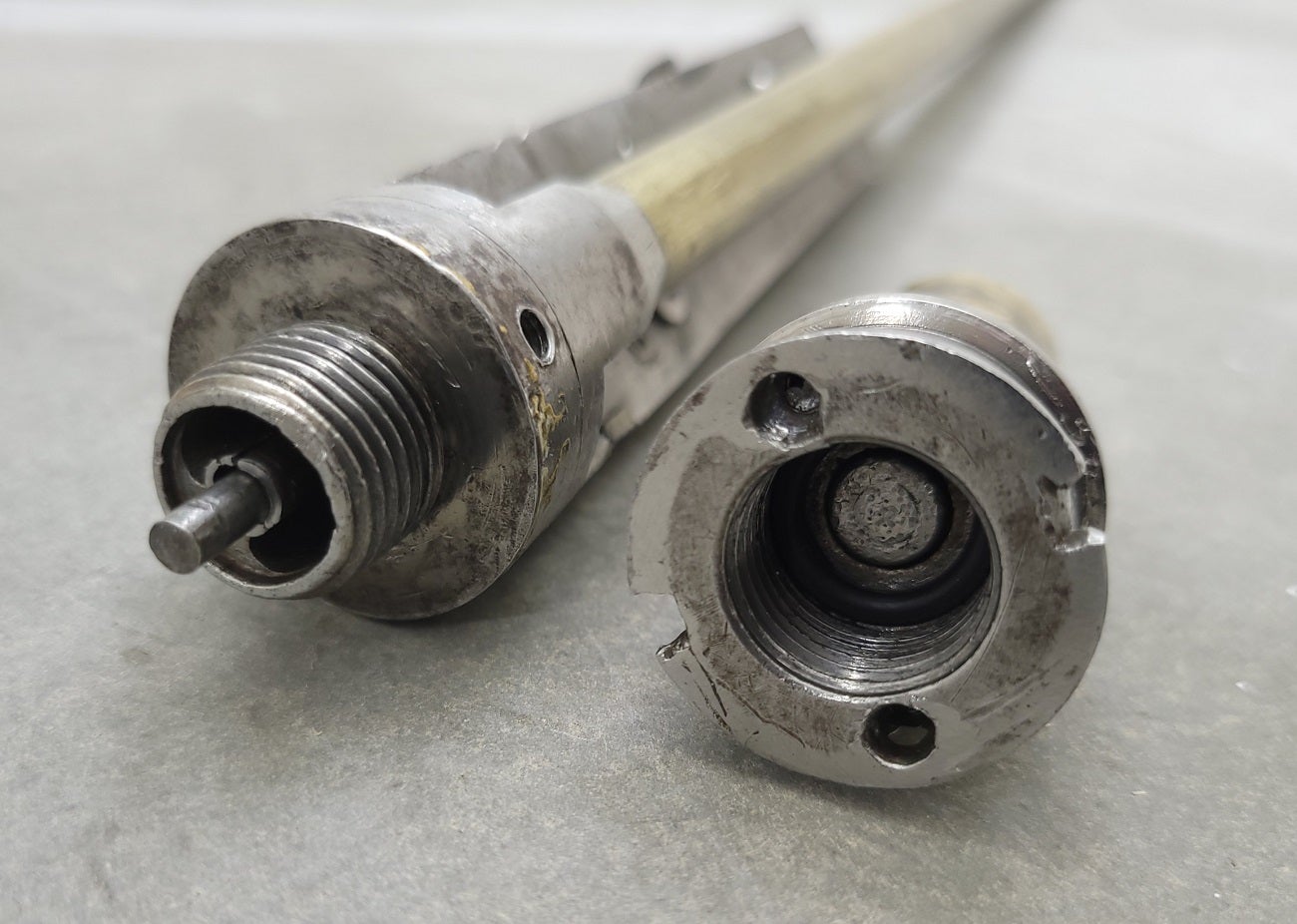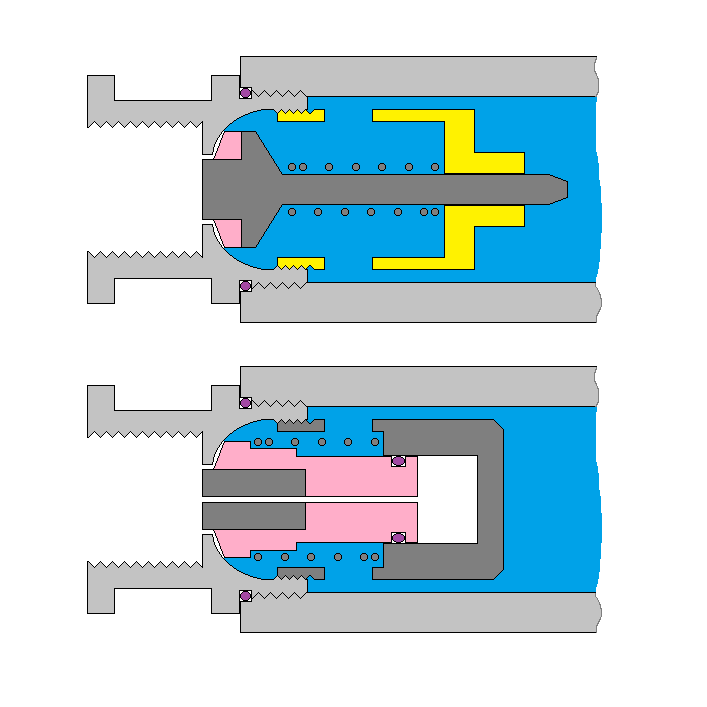A do-it-yourself enthusiast (hw97karbine) recently dropped us a line to show us one of his latest projects – the restoration of an antique Victorian Air Cane Gun. Possibly a companion or replacement for sword canes, the pneumatic cane gun makes use of some clever engineering to turn an everyday object into a defensive weapon.
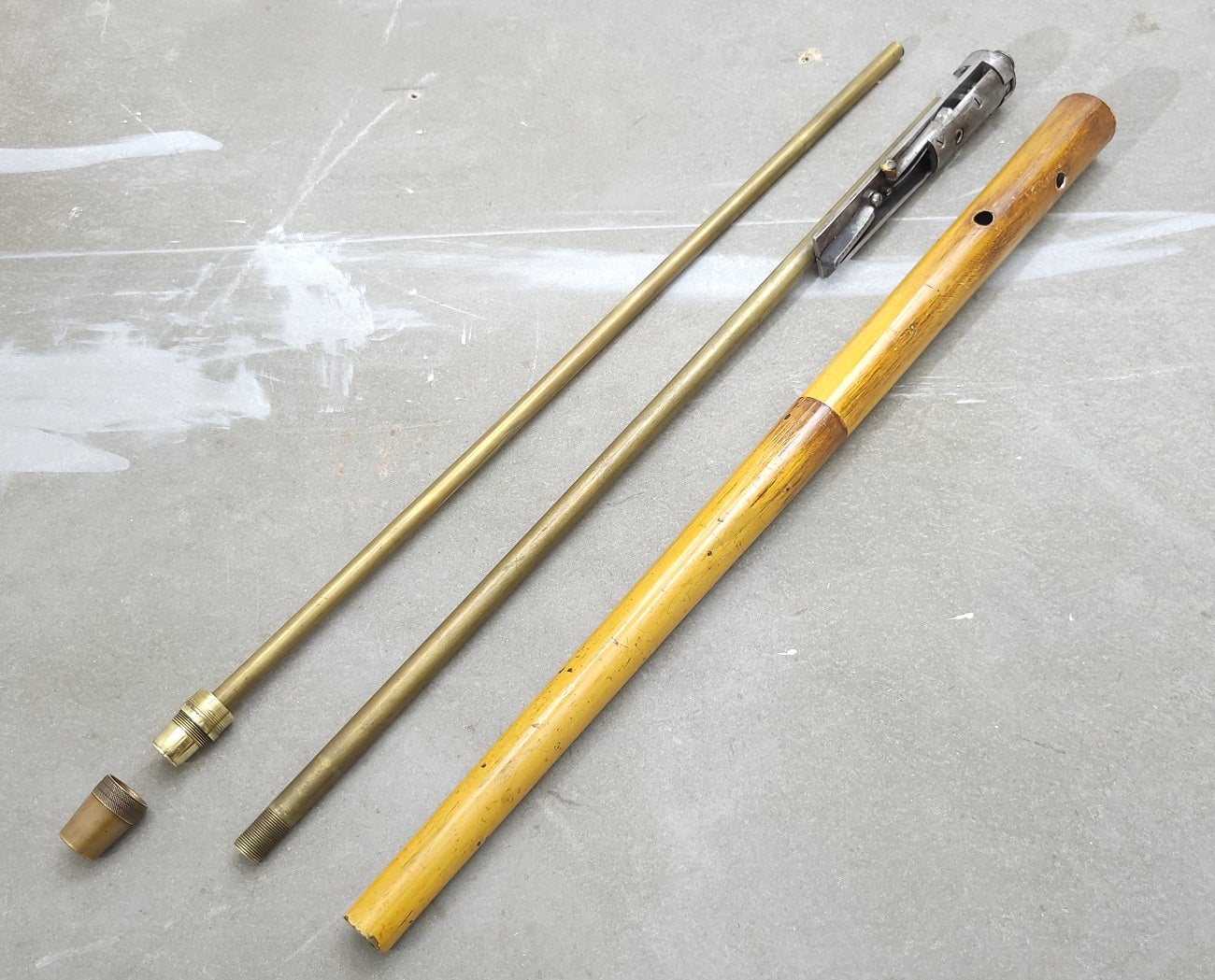
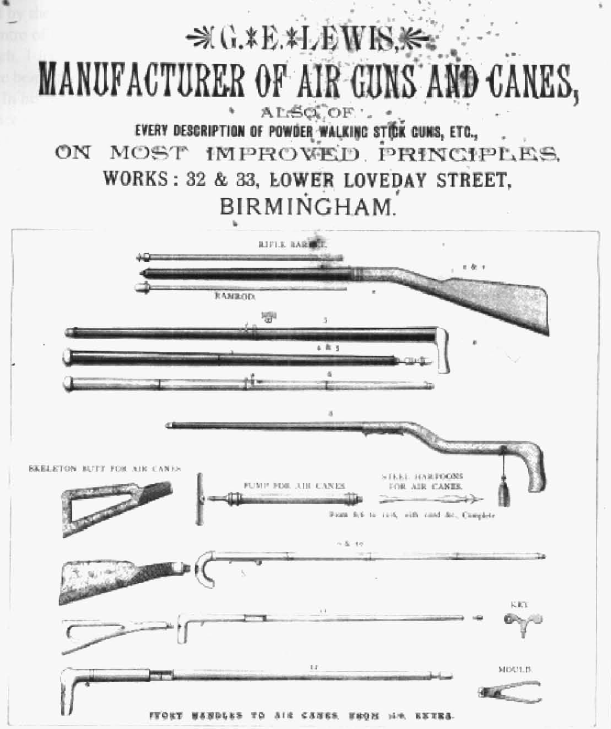
Antique Victorian Air Cane Gun Restored and Tested
The air cane was a must-have accessory for the British Victorian gentleman. As a single shot muzzle-loader it was not the best tool for self defense, yet these items were popular as mechanically interesting novelties that were able to fire a projectile without smoke or flame.
This example was acquired in a relatively poor state. None of the accessories were present such as the pump to pressurize the chamber and key to cock the mechanism. The air chamber itself (the upper half of the cane) was corroded on the inside and deformed, and therefore deemed unsafe for use. In order to replace it, an adapter was machined to allow a 9oz CO2 bottle to be used instead.
The mechanism was functional and just needed a little cleaning. While it was taken apart, the opportunity was taken to document the internals. When the trigger is released, the main spring knocks the hammer backwards through the rotation of the crank or tumbler. This smacks the firing pin that hits the head of the valve, allowing a quantity of pressurized air to be released from the chamber, that propels the projectile down the barrel.
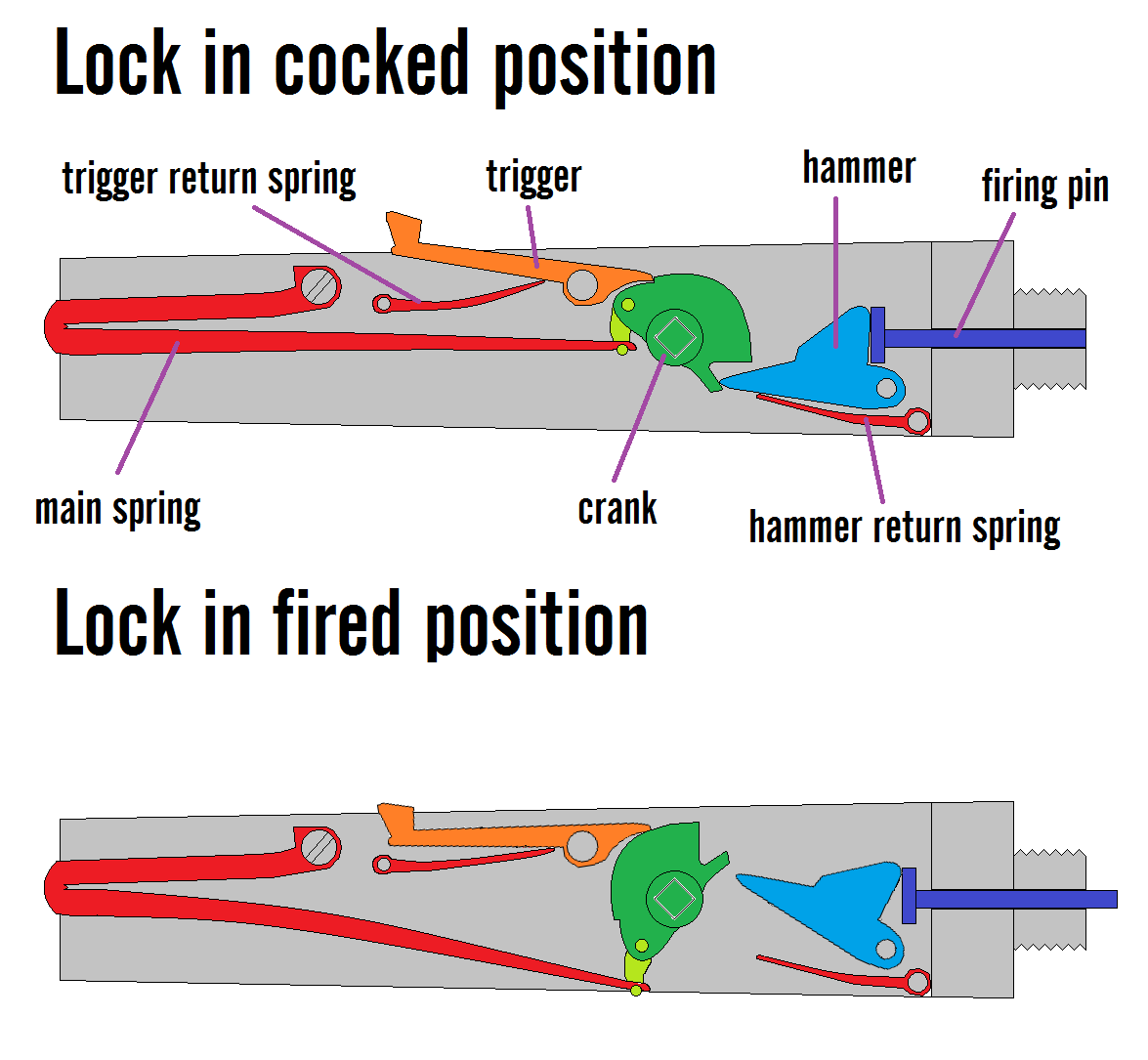
- Note the raised portion of the valve
After some reassembly and adaptation, hw97karbine went to test the cane gun using a fresh CO2 bottle. He had the forethought to include some chronograph data as well as some physical penetration data. For testing, our gentleman had to acquire some .32 caliber lead projectiles which ended up weighing 2.9 grams (or nearly 45 grains). In addition, he fabricated a tool with which the cane gun could be cocked.
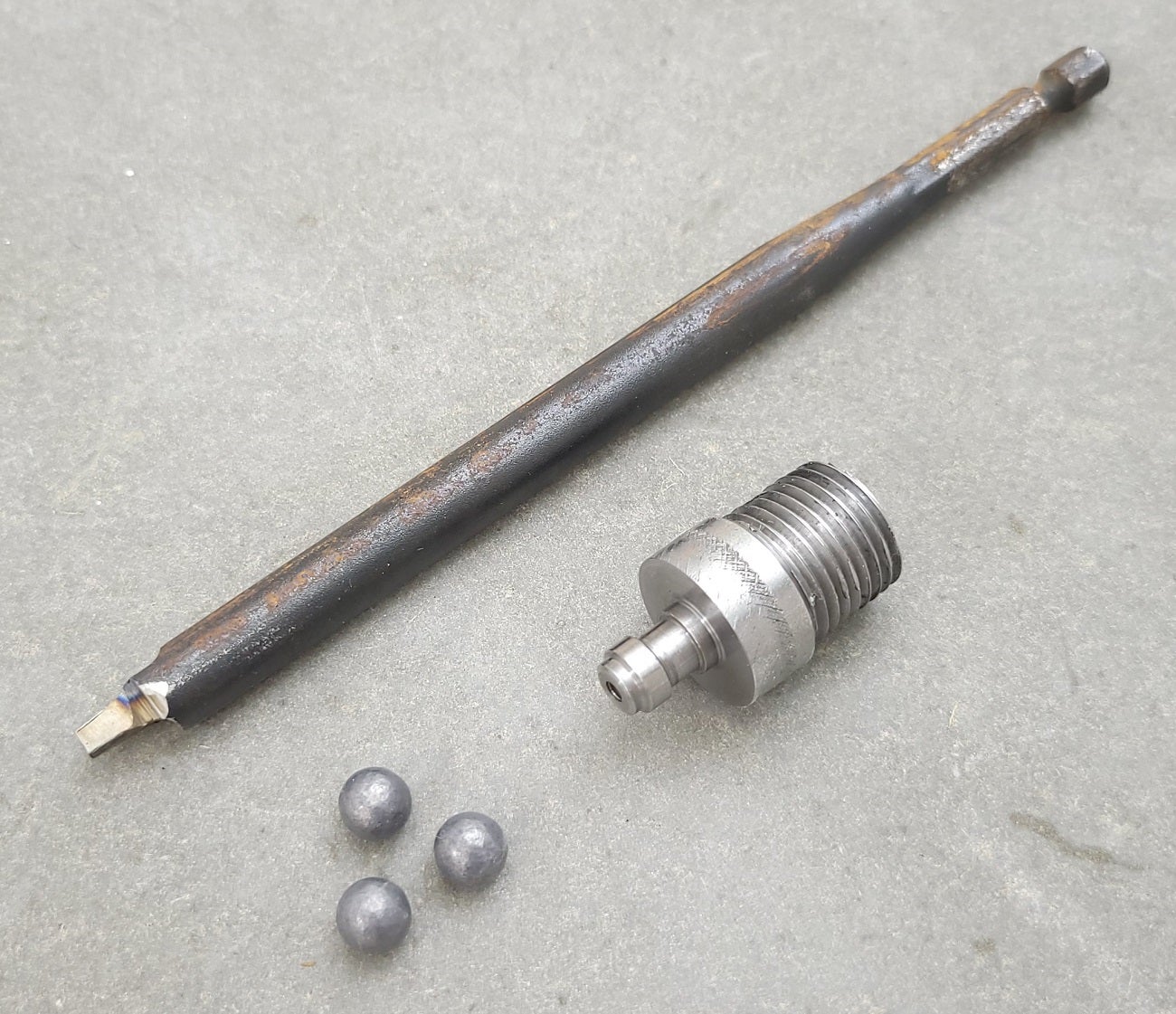
However, despite being able to power the cane gun, it turns out that a core component of the cane gun, the pressure valve seal, had worn out over time. Then it turns out that the valve stem had a horn seal that had worn away and was allowing too much air to escape with each firing. A new one was machined and fitted with a Delrin seal which finally restored the cane gun to full function. Chronograph data listed below:
- 634 fps – 40 ft lbs (193 m/s, 54 J)
- 623 fps – 38 ft lbs (190 m/s, 52 J)
- 616 fps – 38 ft lbs (188 m/s, 51J)
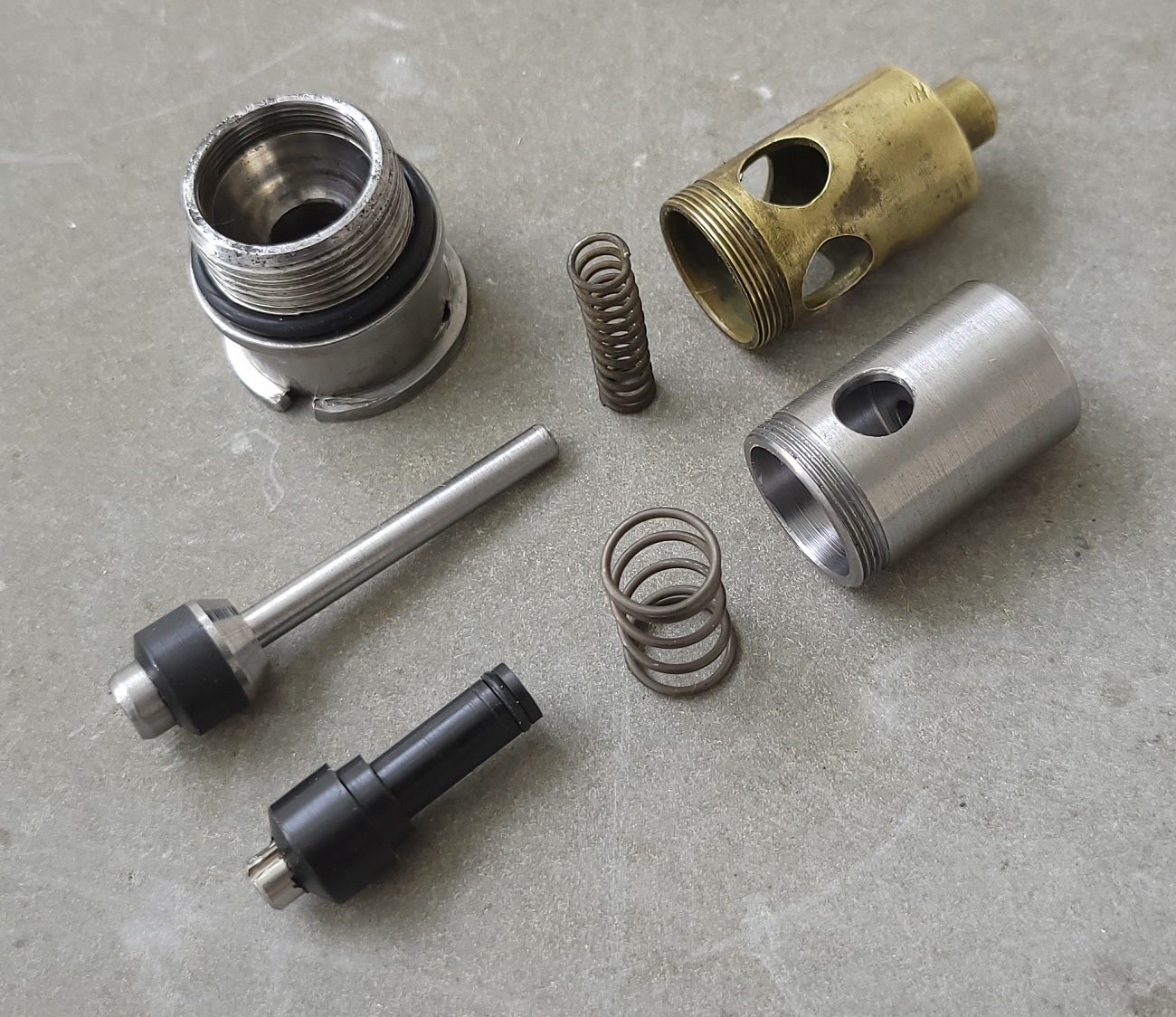
The old components (above) and new components side by side
Not being quite satisfied with the typical results expected from such a device, our friend decided to fabricate some new parts for the gun in order to get a bit more performance out of it.
It was felt that a little more could be squeezed out of this mechanism though, so a new valve known as a “balanced valve” was made. In the original valve it can be seen that the pressure acts on the full base area of the valve stem, which increases the force keeping it shut. In the balanced valve design, most of the valve base is sealed off, greatly reducing the force needed to open the valve and allowing a higher chamber pressure to be used. Note the vent in the center of the stem that is important to allow air into the sealed chamber after firing, helping it to re-close and avoid sticking open.
After some tweaking the new valve worked as intended, allowing chamber pressure to be raised from 600 psi to a maximum of 1700 psi. At this pressure the lead ball easily blew through two 5/8″ thick sections of pine.
New shot tring with improved chamber pressure:
- 883 fps – 77 ft lbs (269 m/s, 105 J)
- 884 fps – 77 ft lbs (269 m/s, 105 J)
- 878 fps – 76 ft lbs (268 m/s, 104 J)
With just a bit of thought and modern machining practices, he nearly doubled the power of the device – impressive! While the 77ft-lbs of energy isn’t super impressive to look at, it still isn’t anything you’d want to get shot – maybe even enough to deal some serious damage to an unsuspecting attacker. I think this guy has done a great job not only restoring something out of the past but taking time to improve upon the design without destroying the original components to do so.
 Your Privacy Choices
Your Privacy Choices
